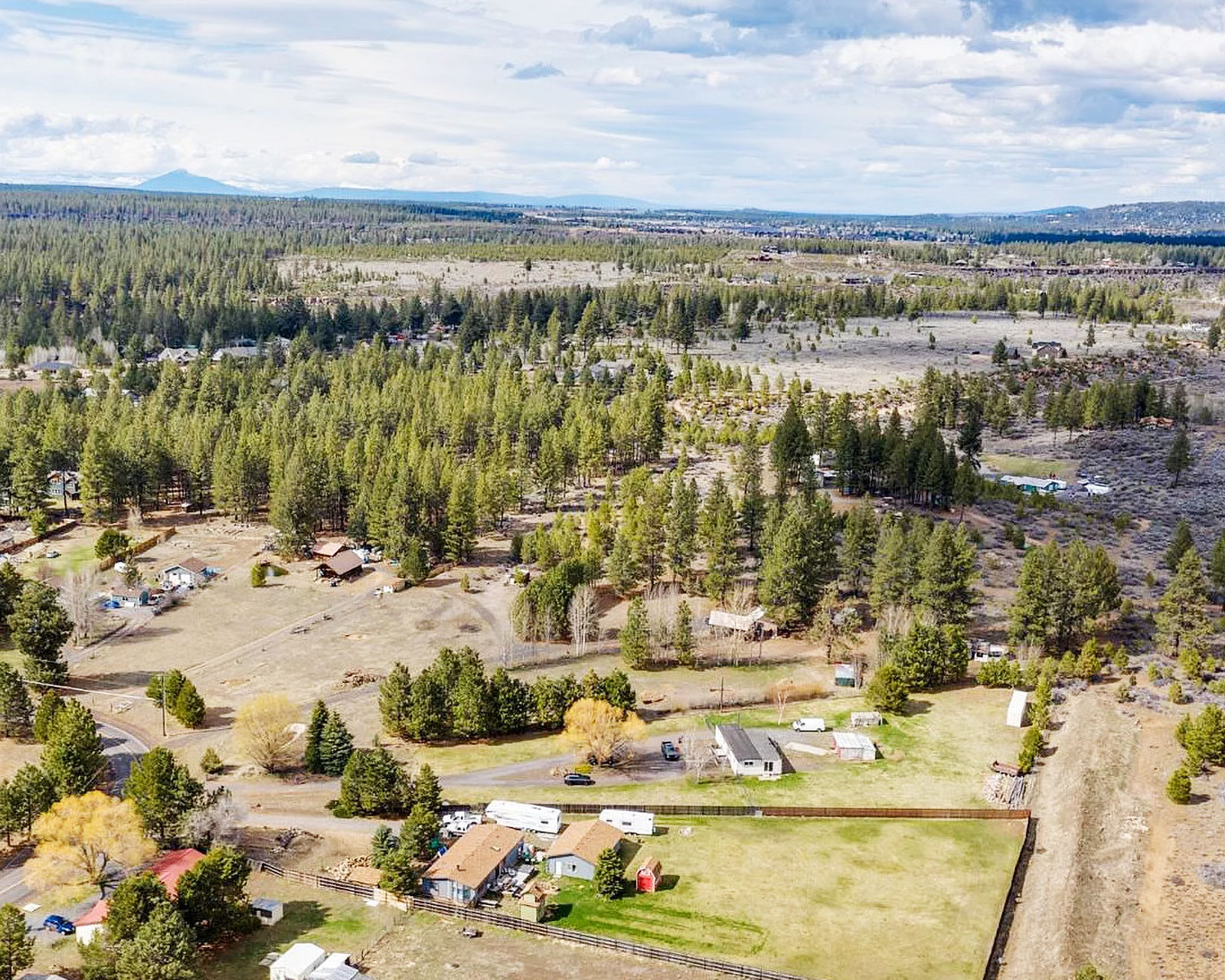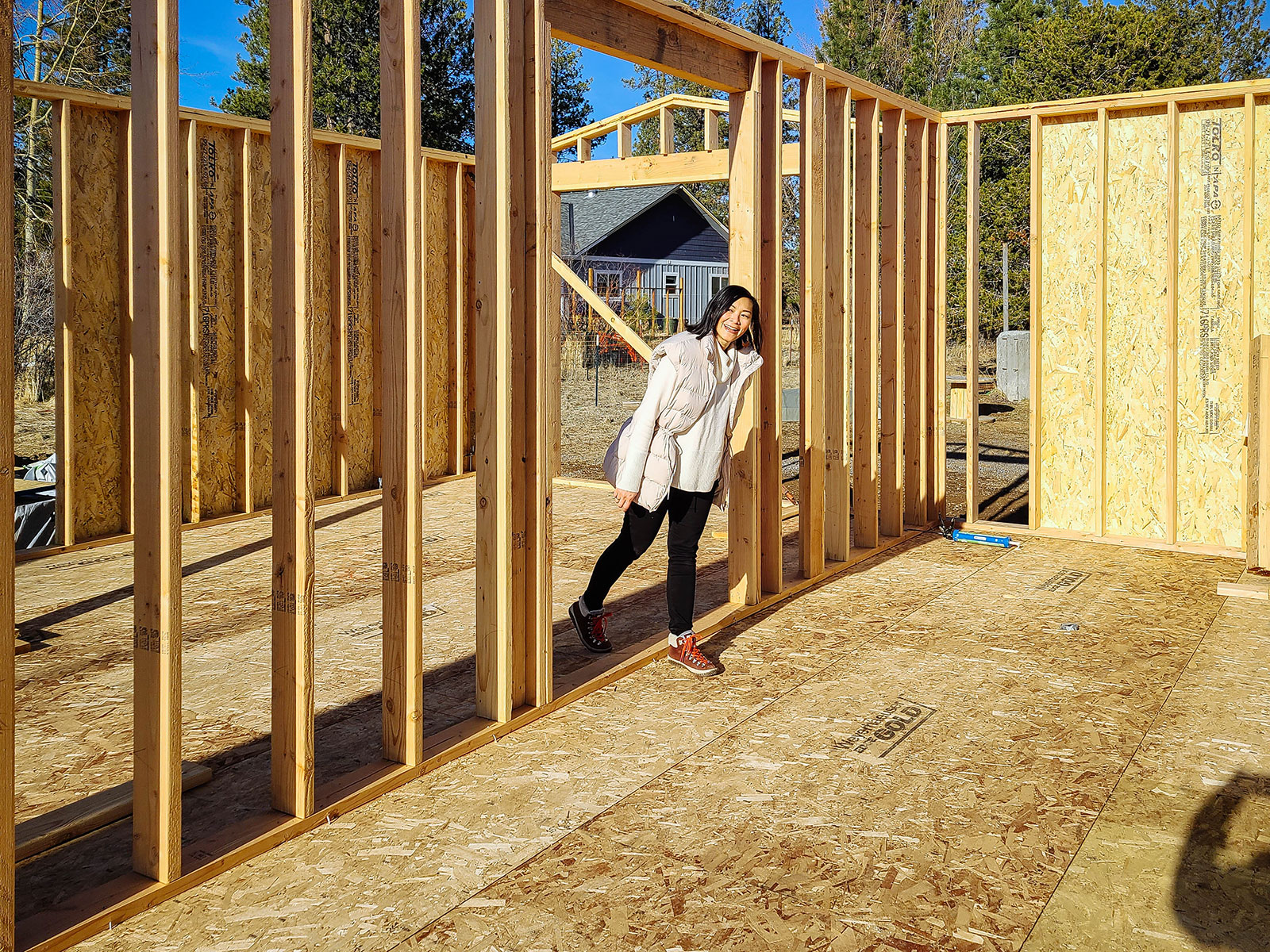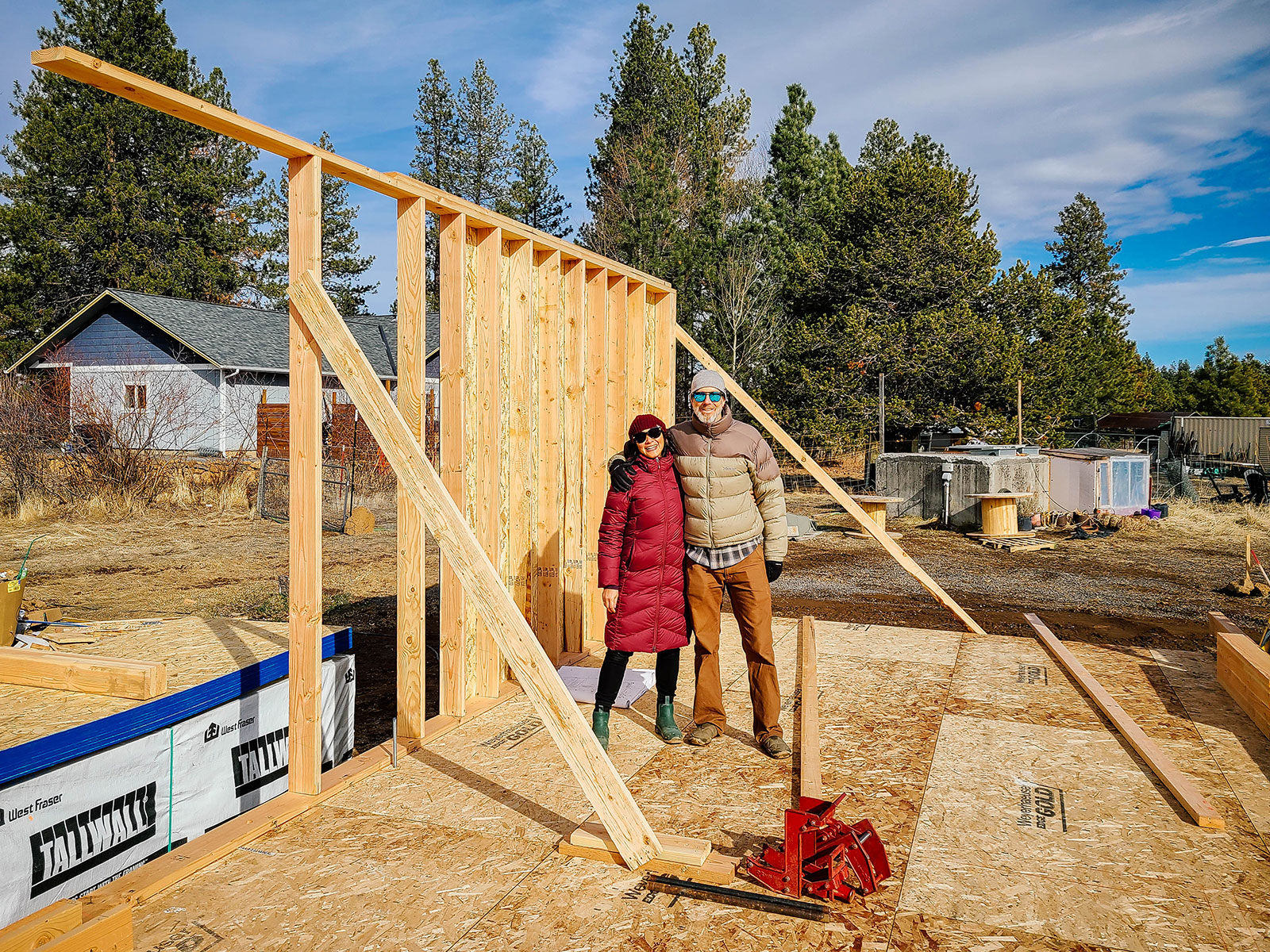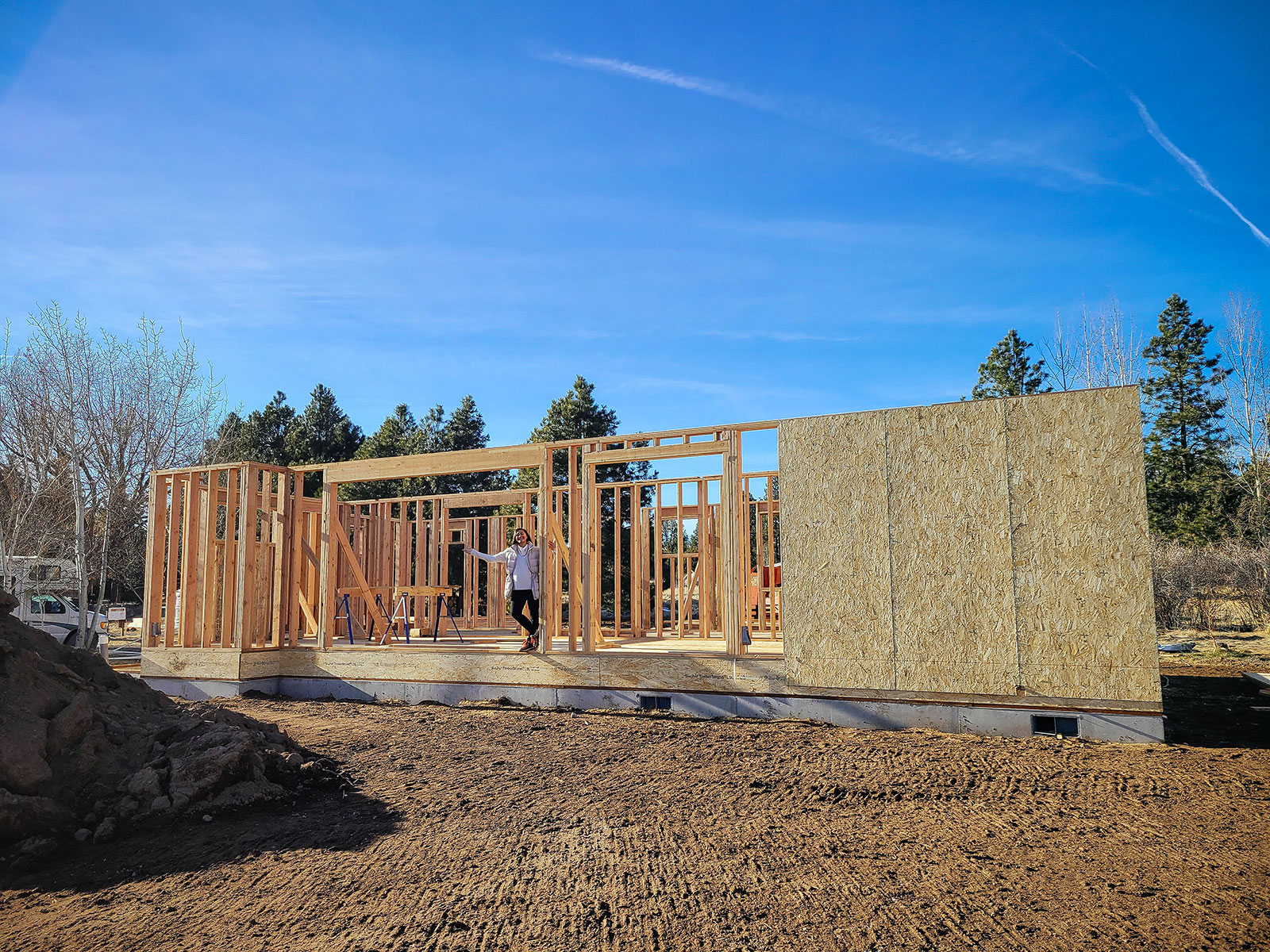There are certain things I love about being self-employed—growing my own business, setting my own schedule, working in pajamas—but getting a construction loan is not one of them.
Let me tell you, it was quite the task. My husband and I sort of knew this going into it, preparing all the documents we needed well ahead of time, but we still had a number of hiccups during the three-month process.
Before I get any further, I should make it clear that I am not a real estate or banking professional, and my personal experiences in this article should not be construed as legal or financial advice. If you want to get a construction loan, please consult with qualified local professionals (such as real estate brokers, loan officers, lawyers and the sort) for help with securing the right loan in your specific situation.
With that out of the way, grab a beverage and get comfy. I’m going to share everything we’ve learned in the three years leading up to our loan closing, and break down the exact process we went through to apply for and close on a construction loan.

Buying the land
If you’re planning to buy land to build a house on, there are generally three different ways you can go about getting a loan.
(Keep in mind these are just the more common scenarios with most homeowners; I’m not covering other types of loans like construction-only loans, renovation loans, or owner-builder loans because I have no experience with them.)
Scenario #1: You secure a land loan only, then secure a separate construction loan down the line.
Why would you do this?
Maybe you’re not yet ready to build a house and need time to explore all your options. Or maybe you already know that you can’t qualify for the full amount of a land + construction loan.
Dreaming of owning a slice of land somewhere? Here’s how we found land to build on and how you can go beyond a real estate agent in your search for land too.
With a land loan, you have a smaller down payment and pay less in closing costs. You can sit on the land and let it build up equity, which will help you make the down payment on a future construction loan.
The downside is you’ll end up paying two sets of closing costs (for the land loan and then for the construction loan) and might end up with a higher interest rate on your eventual mortgage.
The upside is if you pay off the land loan, you have a better chance at getting a construction loan because the bank uses your land as collateral for the loan. Your land, along with the equity in it, can then be used toward the down payment on your construction loan.
Scenario #2: You secure what’s called an “all-in-one” construction loan.
An all-in-one loan (also called a construction-to-permanent loan or single-close construction loan) bundles the purchase of the land with the cost to construct a new home on it. That means you need to have everything in order (a buildable lot, full set of construction drawings, and contract with a builder) for your loan to close.
Down payments vary by lender but you can expect to put down 20 to 30 percent.
Once construction is finished, the loan converts to a permanent mortgage at a fixed rate.
The interest rate is typically locked in at the beginning of the loan process, so whatever it is when you first apply for the loan, will be the rate you pay on your permanent mortgage 12 to 18 months later.
This type of loan is harder to get because banks consider it riskier. They want to be able to use your land as collateral for the construction loan, but they can’t do that if you don’t own the land.
Scenario #3: You pay cash for the land and secure an “all-in-one” construction loan to build on it.
This is what my husband and I did. We bought our property for the land (it had a teardown on it) and paid in cash. When we approached the bank for a construction loan, we already owned the land free and clear and just needed to demolish the existing house.
We also had two years of equity built up, so we used the land as down payment for our all-in-one loan (and did not have to make an additional down payment).
We locked in our interest rate early (rates actually went up three times by the time we closed) and paid one set of closing costs. When the house is done, our construction loan will convert to a standard mortgage at the same interest rate we’ve been paying.
You might be wondering what happens if the interest rate changes during construction—and it probably will, considering the long timeframe.
If rates go up, you’re golden. But if rates go down, your bank may have an option for you to adjust the rate before the loan converts. (Ours does a loan modification, free of charge, without us having to go through a refinance. So definitely check with your loan officer!)

Qualifying for a construction loan
So once you have your land, the next step is going to the bank and getting qualified for a construction loan. The entire process from application to closing takes at least 90 days, but is also dependent on the building permits being approved in that timeframe.
If your building permits are delayed, the clock starts ticking on your interest rate lock. You may end up paying more money to extend the rate lock, or losing it altogether. So, I recommend submitting for permits as soon as you have your construction drawings!
For a more detailed look inside the world of construction loans, head over to my guide on Construction Loans 101: what they are, how they work, and who gets paid when.
Once you choose a bank and start the construction loan application process, here’s what to expect.
It’s all about the tax returns
For a self-employed person, the bank takes the last two years of your personal and business tax returns plus your current debt-to-income ratio to determine your qualification (aka the initial credit approval). It doesn’t matter if you’re applying in December of the current year, this year’s income means nothing. Last two years only.
Yep, we learned this the hard way.
When we went to the bank in August 2022, we had more than enough savings to cover all our soft costs and then some. My income was the highest it had ever been, and because of how I’m paid, my next three months of income were guaranteed. But the bank would only take our 2021 and 2020 tax returns as proof of income.
Well, in 2020 we became a single-income household. We’d just had a baby, and my husband set aside his career to care for our kids so I could focus on scaling my business. He had income from day trading, but reinvested most of those dividends so his income was more or less null in the bank’s eyes.
Because of the way my business was structured (which I’ll get into more below), we weren’t confident that our single income was enough to qualify.
At that point, we had two options. We could wait to file our 2022 taxes before proceeding with the loan, since our last two years’ income would then be higher.
But that meant we’d have to put things on hold until March or April 2023 when our taxes would be filed and processed. (You can’t just give copies of your completed returns to the bank, they’re requested directly from the IRS.)
Our second option was to bring on a co-borrower to bump up our income on paper. Thankfully, my dear mother-in-law stepped in as a non-occupant co-borrower. This meant my husband and I were still responsible for repaying the loan, but we could factor in her income to qualify for the loan amount we needed.
Having a second income on our loan application helped us get our initial credit approval and ultimately, our loan approval.
(It should be noted that a co-borrower shares ownership of your assets, so this is really only an option if your co-borrower is a trusted relative. Down the line, you can refinance to remove the co-borrower.)
At this point, you’ll know what your interest rate is and have the option to lock it in for 90 days. If you don’t, your rate during construction and the entire term of your mortgage will be the available rate when your construction loan closes.
The rate could be higher or lower; your loan officer will be able to give you guidance on where they think rates are headed. (Our loan officer always got a heads up from upper management a day or two before the bank raised their rates.)
Your business structure (and how you pay yourself) matters
As a self-employed business owner, you likely file as a sole proprietor, LLC, or S corp.
As a sole proprietor or single-member LLC, all the profit your business brings in is considered income, so there are no surprises here.
But if you’re filing as an S corp, you receive income as both a W-2 employee and a shareholder of your own company.
In a generally legal and advisable business move, let’s say you pay yourself a “reasonable salary” to lessen your tax liability, then take the rest in cash distributions. This could backfire when the bank looks at your income and determines that you (as an employee of your own business) don’t make enough to qualify for a construction loan.
Even though all the money ends up in your AGI on your tax return, conventional underwriters may raise a yellow flag if they see a small salary and a large K-1. That’s because a “salary” is considered stable and predictable, while “profits” are fleeting and unpredictable.
Another concern is if you changed your business structure within the last two years. You’ll have to explain that in writing, as banks are wary about any change that may affect your income and your ability to repay the loan.
You’ll need to gather all of your paperwork… lots of it
Besides tax returns, the bank will also ask for bank statements (of every kind, including investments and retirement), a current balance sheet, and a year-to-date (YTD) profit-and-loss statement.
In fact, if the loan process takes longer than three months or happens at the end of a fiscal quarter, you’ll need to submit all of the paperwork again to ensure the oldest statement—once your file goes to the underwriter for final approval—is not older than three months.
You’ll have to make sure any large deposits in your bank accounts are “seasoned” (meaning, they’ve been sitting there for at least two months) and explain any anomalies or discrepancies in writing.
If you currently own other property, you’ll need to submit various other documents (such as rental income or tax statements) to help the bank determine your debt-to-income ratio.
Your credit report should be as clean as possible
Your credit report will be scrutinized, and any negative marks will need to be explained in writing.
It should go without saying that before you even think about walking into a bank, you should pay off all frivolous collections (like that $100 collection from two years ago that you’ve been refusing to pay out of principle—yes, the bank will require you to pay it and obtain proof of payoff in writing before your loan can move forward).
You should pay off all of your credit cards, and keep them paid in full during the loan process. This might mean making weekly payments on your cards (annoying, I know) or just paying for everything in cash until you close on your loan.
If you’re like me, you use your credit cards for absolutely everything just so you can rack up miles and points (and then pay them off every month).
Well, if your credit happens to be pulled before you’ve made a payment, it could easily show that you have $5,000 or more in revolving debt—and that will affect your debt-to-income ratio.
No, the bank doesn’t care (or believe) that you’ll pay it all off. They only believe what they see on paper. So make sure you have very little to zero credit card balances before you apply!
Your business needs to be on a stable track of growth
The bank required me to sign a document called a Continuance of Income certifying that I did not expect any negative changes to my income. They want to be assured that my self-employment income will remain at the same level for the next three years.
This is one of the things that drives me batty about being self-employed vs. being an employee when it comes to construction loans.
Self-employed people are considered less stable, even though we have the ability to pivot and produce new streams of income. Employees are considered more stable, even though they can be fired or laid off the next day. (I mean, no bank requires verification that an employee will still have their job in three years.)
It just doesn’t make any sense. But alas, that’s how it goes.
If you’re relying on annuities or investments to qualify for the loan, they might also request your last three months’ statements as well as statements from the same three-month period the previous year in order to verify income continuance.
You’ll probably be asked to submit an updated balance sheet and profit-and-loss statement before your loan file goes to underwriting (to verify that your income is the same as last year, if not higher).
The bank will look at what you do for a living and see if you’re new to the business or experienced (if the former, there’s more of a risk that your income will fluctuate).
If your business is unconventional (as it was in my case, being a blogger—or, ahem, a digital media publisher), then you’ll need to explain in writing how you derive income from it. Same if you have long-term side hustles in addition to your main gig.
If you have irregular earnings, you’ll have to explain that in writing as well. Maybe your industry is seasonal, or you took some time off for health reasons. Maybe you can show an additional year’s tax return to support your statements. (But be aware that once you give your bank any document, they can’t unsee it.)
It all boils down to this: The bank will want to know about all the special circumstances that affected your income.
What if your tax return shows a steep drop in business income? This could make it really difficult to get approved for a construction loan.
Ideally, you can document your recovery with a YTD balance sheet and profit-and-loss statement that shows your business trending upward. To convince the underwriter that you’re no longer a risk, you can write a letter explaining all the steps you’ve taken to reduce your business expenses and how you’re working to increase revenue.
This may sound like a lot, but as long as you can fully document how stable your income is, you’ll make it to the home stretch.
Income is just one piece of the pie
Besides looking at how much money we made, the bank also calculated how much money we owed.
For most people, this may include student loans, vehicle loans, lines of credit, and other debt obligations, plus your future mortgage payment. Typically you’ll need a debt-to-income ratio below 45 percent to qualify for a construction loan.
You’ll also need cash on hand or assets that can easily be converted to cash. This is where it starts to feel like you’re hemorrhaging money! (And at this point in the process, you’ve already paid for some soft costs like architect fees and building permits.)
We didn’t have to make a down payment since our land was used as the down payment. But we had to have sufficient cash for our closing costs and mortgage reserves.
Mortgage reserves cover your principal, interest, taxes, and insurance—they’re essentially emergency funds in case you have a loss of income after your house is completed.
If you can’t provide proof of these funds, you might not be able to move forward with your loan application. Our bank required six months of reserves, but this amount varies by bank and could be as little as two months, or as much as one year of mortgage reserves.
How your income is calculated
Using your personal and business tax returns, YTD balance sheet, and YTD profit-and-loss statement, the underwriter averages your last two years of revenue minus expenses, adds back any non-cash expenses (like depreciation), and arrives at your qualifying monthly income for loan purposes.
Here’s a hypothetical (and simplified) scenario for a sole proprietor filing a Schedule C for 2022 and 2021:
Our fictional borrower’s total income (before expenses) is $100,000 in each year. In 2022, they deducted $15,000 in expenses, including $5,000 in depreciation. In 2021, they deducted $10,000 in expenses, including $4,500 in depreciation.
Based on these calculations, their net income for 2022 is: $100,000 – $15,000 in expenses = $85,000, plus depreciation of $5,000 = $90,000 in net income for that year.
For 2021, business income of $100,000 – $10,000 in expenses = $90,000, plus depreciation of $4,500 = $94,500 in net income.
To calculate the qualifying monthly income, add $90,000 and $94,500 = $184,500, then divide by 24 months = $7,687.50 per month.
Assuming a maximum debt-to-income ratio of 43 percent, this self-employed borrower is allowed a mortgage payment (plus all other monthly and revolving debt) equal to $3,305.63.
But… what if the expenses were higher?
It’s no secret that one of the perks of being a business owner is the ability to reduce your tax burden by deducting business expenses from your gross income. After all, lower taxes is a goal most business owners hope for every year.
Unfortunately, what you tell the IRS is also what you’re telling the underwriter. Maximizing your (legal and allowable) business deductions means you’re also reducing your monthly net income and the loan amount you can qualify for.
Based on many discussions with our loan officer, I should also add that these calculations aren’t hard-and-fast rules. If you had a one-time windfall in your business, it probably won’t boost your qualifying income unless you can document that the revenue falls within your normal business activities. (The underwriter will likely deduct any income that’s unique and non-repeatable.)
Similarly, if a one-time increase in expenses caused your income to decline, the underwriter will want to know the details of those expenses. Your loan officer should work with you to proactively prepare all written supporting documents before the loan file goes to the underwriter.
The underwriter has the final say
You may have noticed so far that I mention putting things “in writing” a few times and you’re like, What the heck?
Well, all of these supporting documents go into one fat file—your completed loan application—that’s then delivered to the underwriter for final approval.
The underwriter has the final say on your loan. This person has never met you. There is no way for you to talk to the underwriter to plead your case should something go awry.
Sometimes your loan officer can help clarify the information in your file, but otherwise your loan officer cannot influence the underwriter’s decision.
An underwriter’s job is to look out for the bank’s best interests and make sure you’re a good candidate for repaying the loan. Denials are rare once you make it past the initial credit approval, but they can happen.
For instance, the underwriter may find that they can only loan a portion of the amount you’d applied for. If you don’t have enough cash in your accounts to make up the difference, your loan will be denied.
Or if something drastic changes with your financial picture (like new debt or mystery deposits), your file will raise a red flag. With red flags come more questions and more requests for documentation.
(Mystery deposits might seem like an odd reason for concern—after all, more money is good, right?—but it could indicate that you’re borrowing those funds from a personal loan or from the Bank of Mom and Dad.)
Everything you’ve done up to this point is solely to satisfy the underwriter’s lending criteria. It’s a good reminder that if you’re considering taking out a construction loan, you should consult with a CPA to ensure your tax returns positively reflect your financial situation.

Well, after more than three months of back and forth with the bank, my husband and I got final credit approval just a couple days after our interest rate lock expired—thankfully, they were able to give us a free rate lock extension due to all the bank holidays that month. Whew!
If you’ve made it this far, I hope you feel better equipped to move forward with achieving your dream of building a house!
Follow along as Garden Betty Builds a House:
- And Just Like That, We Are Officially Landowners
- Why We Decided to Build a Custom Home
- Pre-Construction Progress: Septic Feasibility, House Plans, and Property Cleanup
- How We Found Land to Build On—and How You Can, Too
- A Surprise Move With a Silver Lining
- The Home Building Begins: A Recap of the Last 5 Years
- Demo Day: Tearing Down Our Old House
- What You Should Know Before Buying Land (My Real-Life Tips)
- Construction Loans: What I Wish I’d Known As a First-Time Borrower
- How to Get a Construction Loan While Being Self-Empoyed—My Experience















